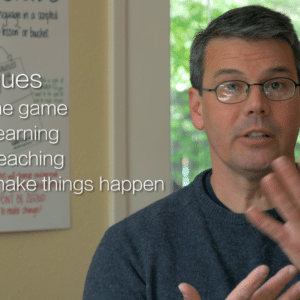
Technique: Mumble
In the movie Finding Nemo an adventurous young fish wishes to break free from the strict world his father constructed under the reef. During a school field trip, he escapes and swims into the open ocean. Nemo eventually gets lost and finds himself in Australia. Without the support of adults, Nemo has to rely on his own intellect and expertise to survive and find his father Marlin. I refer to the deep ocean in this movie as a metaphor for language learning throughout this blog post.
Language learning (for me) tends to feel like swimming deeper and deeper into the ocean. Just like Nemo, Marlin, and their friend Dory have to avoid unexpected hurdles (such as getting caught in a strong current or being eaten by a shark), becoming fluent requires a language learner to prepare for obstacles as well. Just as Nemo and Marlin are forced to fumble their way through the mysterious ocean, we (language learners) have to expect the unexpected, such as pronouncing a challenging vowel, misspelling the target language, and/or singing a song in the target language off tune. Technique: Mumble helps us work through language challenges….and there are many. Pronouncing a series of difficult words, forgetting a useful adverb, or counting backward in the target language are obstacles we should expect to encounter. In preparation to learn, sometimes we have an entire intricate plan, have collected the “perfect” props, and have invited the perfect fluent speaker to teach us and we still struggle reaching our end goal. Instead of focusing on the perceived failure to correctly speak the language, WAYK invites you, the reader, to use Technique: Mumble.

Instructions: Raise your right finger and place parallel to your mouth. Slightly move your finger up and down. This motion reminds the people you are speaking with that you are unsure of the pronunciation, and that you are mumbling. TQ: Mumble also allows you to literally mumble entire words, phrases, and sentences, even when you are unsure what you are you saying or if the pronunciation is correct. This also signals to the other speakers that you would like to carry on with the conversation and fix the mumble later. During immersion, instead of halting or quitting entirely when a mistake is made, it is easier to just acknowledge the mumble and continue speaking in the target language. You can fix the part you mumbled afterward, outside of immersion time.
In one scene of Finding Nemo, Marlin and Dory are stuck inside the stomach of a large whale. Marlin is clinging to the wall, terrified to let go. He is imagining this may be the end of his hunt to find his son Nemo. We hear Dory yell “Just let go!” Letting go of the whale means that Marlin (who is very Type A) will have to relinquish his ability to control the journey, and allow an outside source (the strong water current inside of the whale) to direct his journey. This is what Technique: Mumble in essence encourages.
Post authored by Talia.




